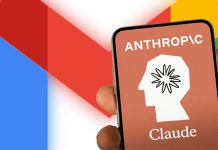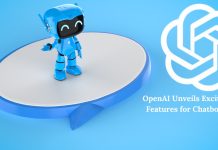Table of Contents
What’s the Key Difference Between CRM and ERP?
In today’s fast-paced business environment, managing information effectively is crucial for growth and efficiency. Two types of software systems often discussed are CRM (Customer Relationship Management) and ERP (Enterprise Resource Planning). While both systems are important, they serve different purposes. Let’s break down CRM vs ERP key differences in simple terms.
What is CRM?
CRM stands for Customer Relationship Management. It helps businesses manage their interactions with current and potential customers. The primary goal of a CRM system is to improve customer satisfaction, retention, and sales.
In short, CRM is customer-focused.
Deeper Dive into CRM
1. Core Features of CRM:
- Contact Management: Keeps track of customer information, such as phone numbers, emails, and past interactions.
- Sales Automation: Helps sales teams manage their pipeline, track leads, and close deals more effectively.
- Customer Support: Manages service requests, complaints, and interactions to enhance customer satisfaction.
- Marketing Automation: Automates email campaigns, social media management, and lead nurturing.
- Analytics: Provides insights into customer behavior, sales performance, and marketing effectiveness.
2. When Do You Need a CRM?
- If your business is customer-facing, such as retail, real estate, or consulting, a CRM system is essential.
- When managing a large volume of leads, prospects, or customer inquiries, a CRM helps keep communication organized.
- It’s also useful for businesses looking to improve their customer retention rates by delivering better customer service.
3. Examples of CRM Use Cases:
- A retail business uses CRM to track customer purchase history and send personalized offers.
- A real estate company uses CRM to manage property leads and schedule follow-up communications with prospects.
- A software company uses CRM to manage support tickets and track customer satisfaction.
What is ERP?
ERP stands for Enterprise Resource Planning. This system manages a company’s internal processes like finance, inventory, supply chain, and human resources. ERP software helps streamline these operations across the entire organization, making it more efficient.
In short, ERP is business-focused.
Deeper Dive into ERP
1. Core Features of ERP:
- Financial Management: Tracks income, expenses, budgets, and financial reports. It helps maintain accurate financial data and supports decision-making.
- Supply Chain Management: Oversees the flow of goods, inventory levels, and logistics, ensuring products are delivered on time.
- Human Resources Management: Manages employee data, payroll, attendance, and recruitment.
- Manufacturing & Production Planning: Helps businesses plan production schedules, track resources, and optimize manufacturing processes.
- Procurement: Streamlines the process of purchasing goods and services, keeping track of vendor relations and purchases.
2. When Do You Need an ERP?
- If your business has complex internal processes, such as manufacturing, distribution, or large-scale services, an ERP system is critical.
- ERP becomes essential when your company needs to standardize operations across multiple departments (e.g., finance, HR, supply chain).
- ERP is ideal for businesses that require detailed financial reporting, resource management, and process optimization across the entire organization.
3. Examples of ERP Use Cases:
- A manufacturing company uses ERP to track raw materials, manage production schedules, and forecast future demand.
- A retail chain uses ERP to manage inventory across multiple locations, track finances, and ensure efficient supply chain management.
- A construction company uses ERP to manage project budgets, allocate resources, and track labor and materials used on each site.
CRM vs. ERP: Key Differences Summarized
| Aspect | CRM | ERP |
| Purpose | Manages customer relationships and sales | Manages internal business processes |
| Main Focus | Improving sales, marketing, and customer service | Streamlining finance, HR, supply chain, and other operations |
| Data Type | Customer-related data (contacts, interactions) | Internal data (finances, inventory, payroll) |
| Primary Users | Sales, marketing, and customer service teams | Finance, HR, operations, and supply chain teams |
| Scope | Narrow, focused on customer interaction | Broad, covers many departments and operations |
| Customization | Highly customizable for customer processes | More rigid but comprehensive |
Integrating CRM and ERP Systems
While CRM and ERP systems serve different purposes, they often need to be integrated for the best results. When the two systems work together, businesses can gain a holistic view of their operations and customer interactions. Here’s how they complement each other:
- Unified Customer Data: CRM helps you understand who your customers are and how they interact with your business. ERP adds financial and product-related data to provide a complete picture.
- Better Sales and Inventory Forecasting: CRM can predict future sales, while ERP helps you manage inventory. Integrating both systems helps businesses avoid stockouts or overstocking.
- Improved Customer Service: With CRM, your service team can access customer history, and with ERP, they can quickly check inventory or shipment statuses to provide better responses.
Benefits of Integration:
- Streamlined Workflow: Sales teams can access product availability or pricing directly from ERP, while operations teams can track customer orders from CRM.
- Increased Efficiency: By eliminating data silos, both systems provide a real-time view of both customer interactions and internal operations, allowing quicker decision-making.
- Better Reporting: Integrated data from CRM and ERP systems allows for more comprehensive reports, giving insights into everything from sales trends to operational efficiency.
Top CRM and ERP Tools
CRM Tools:
- Salesforce CRM: Highly flexible and scalable, suitable for businesses of all sizes. It offers sales automation, customer service tools, and extensive integration options.
- HubSpot CRM: A user-friendly tool with free features, great for small businesses looking to automate their sales and marketing efforts.
- Zoho CRM: Affordable and comes with AI-powered tools to help businesses streamline their customer interactions.
ERP Tools:
- SAP ERP: A robust solution used by large enterprises to manage a range of business processes, including finance, supply chain, and HR.
- Oracle ERP Cloud: Known for its powerful financial management capabilities, Oracle ERP helps businesses of all sizes handle everything from accounting to project management.
- Microsoft Dynamics 365: Combines both CRM and ERP functionalities, making it a popular choice for businesses that need a unified platform for sales, customer service, and internal operations.
Final Thoughts
Both CRM and ERP are powerful tools for managing different aspects of a business. While CRM helps improve customer relationships and sales, ERP focuses on internal efficiency and process optimization. Choosing the right system depends on your specific business needs, and in many cases, integrating both CRM and ERP can help businesses operate more effectively.
which displays our case studies related to CRM and ERPs
Here are the links
- CRM Case Study: Solution for Fintech Company Pre-sales and Post sales Performance Analytics – Case Studies | Zolute
- ERP Case Study : A Comprehensive ERP Solution for Venza Research – Case Studies | Zolute


































